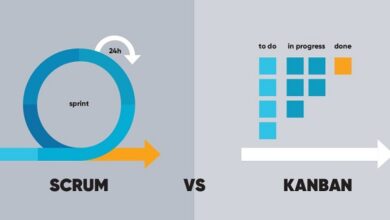Behavioral profile and its advantages
Behavioral profile
The behavioral profile helps to understand the work style of each employee on the team and can be a decisive factor in increasing productivity at home.
In times of a pandemic, organizations use home office work as a strategy to protect their employees. However, maintaining productivity while working remotely can be a challenge ― easily overcome by taking into account the behavioral profile of each employee.
At the end, you will see some tips to increase the productivity of teams while they are at home office. Continue reading and find out more!
What is behavioral profile management and how can it help?
Behavioral profiles are the basis for a theory developed in the 1950s by Maslow and Herzberg called behavioral management . These two scholars created theories about human goals, motivation, and behavior.
The Human Resources sector started to play a leading role in the success trajectory of an organization. Through behavioral management, the HR analyst is able to gain a new perspective on people’s different reactions to everyday situations .
In this context, behavioral management helps leaders to better define positions and ends up contributing to increased productivity .
In addition, it assists in the recruitment and selection processes, making them more effective. In other words, it manages to fit the professional’s skills to the company’s needs, benefiting both the employee and the employer.
But how to do behavioral management in practice? First, it is necessary to understand how the DISC methodology , created to explain the emotional reactions of human beings, works.
This theory, developed in the 1920s by William Martson, advocates that each person should be evaluated according to their predominant profile.
For him, no individual is superior to the other, they just differ in their socio-emotional skills.
In Martson’s theory, DISC is the acronym for four traits: Dominance, Influence, Steadiness, and Conscientiousness.
The advantages of analyzing behavioral profiles
A high-performance team is not made up of just individuals, but rather a union of people with complementary skills. This way, the team is balanced and each person can help each other on different types of tasks. Therefore, by analyzing the behavioral profiles of the people on your team, you have the possibility to adjust skills, identify gaps and optimize your results. In addition, there are other advantages of adopting this practice:
• Personal development: Helps people better understand their own behaviors and how they can adapt to work effectively with others.
• Recruitment: helps in selecting candidates whose behavioral profiles best suit a given position.
• Team management: Facilitates communication and collaboration within teams, promoting a more harmonious and productive work environment.
• Increased productivity and reduced turnover: Employees feel more satisfied, since their functions are related to the activities they perform more easily.
Based on this knowledge, it is necessary to understand that the same person can fit into more than one behavioral profile. In fact, this situation is quite common and it is up to the manager to identify which personality is dominant in that individual.
It is worth mentioning that human beings are complex and, therefore, our personality is made up of a combination of characteristics. It is always recommended to use DISC in conjunction with other assessment tools and methods to gain a more complete understanding of human behavior.
What are the behavioral profiles and how to manage them at home office?
Behavioral profile analysis is a strategy used to recognize and interpret human behavior in situations or reactions to different stimuli. Psychology explains that individuals think, act and behave in different ways.
In the corporate environment these differences are even more evident. Therefore, organizations use the behavioral profile to make the recruitment and selection processes more assertive and to stimulate the professional development of employees.
There are four behavioral profiles:
- Analyst;
- Planner;
- Executor;
- communicator .
Now, get to know the characteristics of each one and how they behave working from home.
1-Analysts at home office
The analyst profile is calm, discreet and rigid. Generally, they are considered pessimistic and realistic, because they have a rational personality.
In addition, they are agile, intelligent, intellectual and have the ability to perform tasks that require details or need quick answers.
Because they have an analytical behavior, the profile adapts very well to working from home. Concentration and discipline collaborate to meet deadlines.
Now, in the sense of being rigid people, they manage to establish a structured routine, without depending so much on social life.
Therefore, to maintain analyst productivity, avoid causing surprises with miscommunications or sudden changes in work processes.
This profile prefers longer deadlines that allow them to perform tasks with perfection.
Other tips to stimulate the analyst’s productivity: don’t let this employee loose too much, keep constant communication and follow his actions. He has a need to report his processes, so always be ready to listen.
Finally, the analyst profile likes and needs feedback to align the planning and visualize the goals achieved.
2-Home office planners
Tranquility, caution and self-control are predominant characteristics of the planner . This behavioral profile appreciates the routine and adapts well to the rules established by the company.
Despite being introverted, planners are easy to get along with and enjoy the dynamism that teamwork offers. However, he needs to have his role well defined within the team.
Still, their productivity is linked to the harmony and coherence with the group’s work. So, to stay productive, he cannot feel isolated.
As they are extremely organized, planners produce more and better when they are able to visualize deadlines. So keep well-structured schedules.
The productivity of this behavioral profile increases when he feels part of the whole, of the collective, even working remotely. Goals, medium and long term goals and constant feedback are motivations to keep you always productive.
3-Home office performers
Executors are optimistic, dynamic and active. They maintain a natural leadership and are not intimidated by risks and challenges. In addition, they enjoy work and have an enviable physical disposition, being determined and persevering.
In challenging scenarios — such as the one caused by the coronavirus pandemic — performers offer creative ideas and immediate solutions to contribute. Generally, they use intuition to overcome obstacles.
But how to maintain the productivity of the executor? Offer tasks that require quick responses, focused on results, and encourage competitiveness, even when working from home. This is essential for this profile to always produce more.
Finally, don’t forget: executor profiles love goals. However, they must be accompanied by result indicators. The more he feels productive, the more he will produce.
4-Communicators at home office
The fourth and final behavioral profile is the communicator . These are talkative, active, extroverted employees who don’t like routine at all. They adapt easily to adverse situations, but need interpersonal contact.
Still, they like to be on the move and are quite autonomous, however, they need social interaction. Otherwise, they can be anxious, especially in the isolation caused by the home office.
In addition, they perform their tasks with agility and speed, are dynamic and like to innovate at work. They communicate easily and enjoy giving feedback to managers. In fact, leaders should be aware of the drop in motivation caused by isolation.
To keep them productive, provide interaction between teams, albeit via video conferences and online meetings. Managers must be ready and available to meet communicators. Don’t abandon them or productivity drops.
Another way to stimulate the productivity of this profile is to give him some task, such as conducting meetings or developing some training with the work team.
Tips to keep your home office productive
Maintaining productivity at home can be a challenge. The apparent absence of routine, isolation or the dynamics of a house shared with other people can distract even the most disciplined employee.
However, being productive in the home office is possible when we put some simple but effective actions into our routine. Check out!
1. Have the necessary tools for remote work
Computer, headset and microphone for online meetings, mouse, programs and a good internet connection are essential to produce more and better.
2. Reserve a space of your own
To avoid interruptions during working hours, have your own environment, which works like an office. If possible, prepare a room in the house for this purpose or place a desk in a quiet place, where you can work away from noise, conversation or television, for example.
3. Plan your actions
Procrastination undermines productivity, so make a plan. Set times to read and respond to emails, to update social media, for projects and online meetings. When you establish a simple, achievable schedule, it makes it easier to feel productive.
To do so, use tools such as Google Calendar, Trello or Pomodoro Timer, which help you organize the day’s schedule and appointments.
4. Respect the schedules
Working from a home office, it’s easy to invert schedules and even change day to night. Therefore, try to maintain your regular working hours, according to when you are in the company. If you’re part of a team, it’s critical to be active when everyone else is. Thus, the productivity of the team will not be hampered. Also, respect the break times for meals and rest. Do not exceed your limits.
5. Establish communication channels
Don’t miss the space for dialogue. Social isolation is necessary, but for work to flow, you have to be in touch. So, be online and available, both for leaders and employees. Also, give feedback, answer emails, answer or return phone calls.
6. Don’t miss any information
In the home office or remote work, it is possible that other computers are used. So be careful with the information shared. Keep the commitment to the company’s confidentiality, do not pass on passwords or documents.
In an ideal scenario, the organization should offer the work tools for the home office, especially the computer. If that’s not possible, back it up and don’t lose any information.
These were the tips to maintain employee productivity in times of home office based on the behavioral profile.
The most important thing is to know how to identify each one of them and, from there, apply techniques so that they feel stimulated and, consequently, produce more.
And if you want to understand more about employee management, workday control and HR routines, access our newsletter and don’t miss any news.




